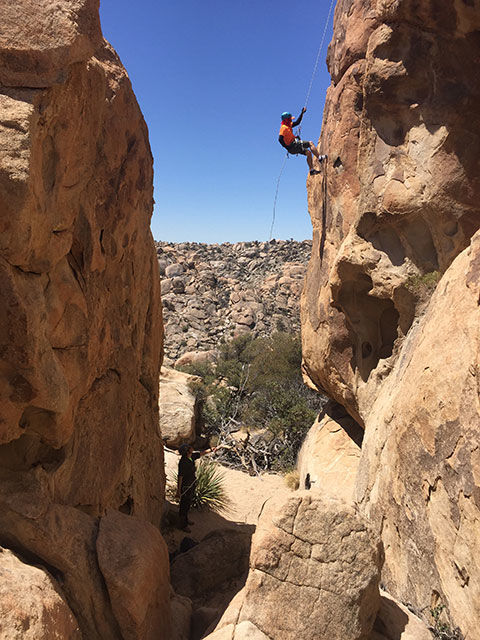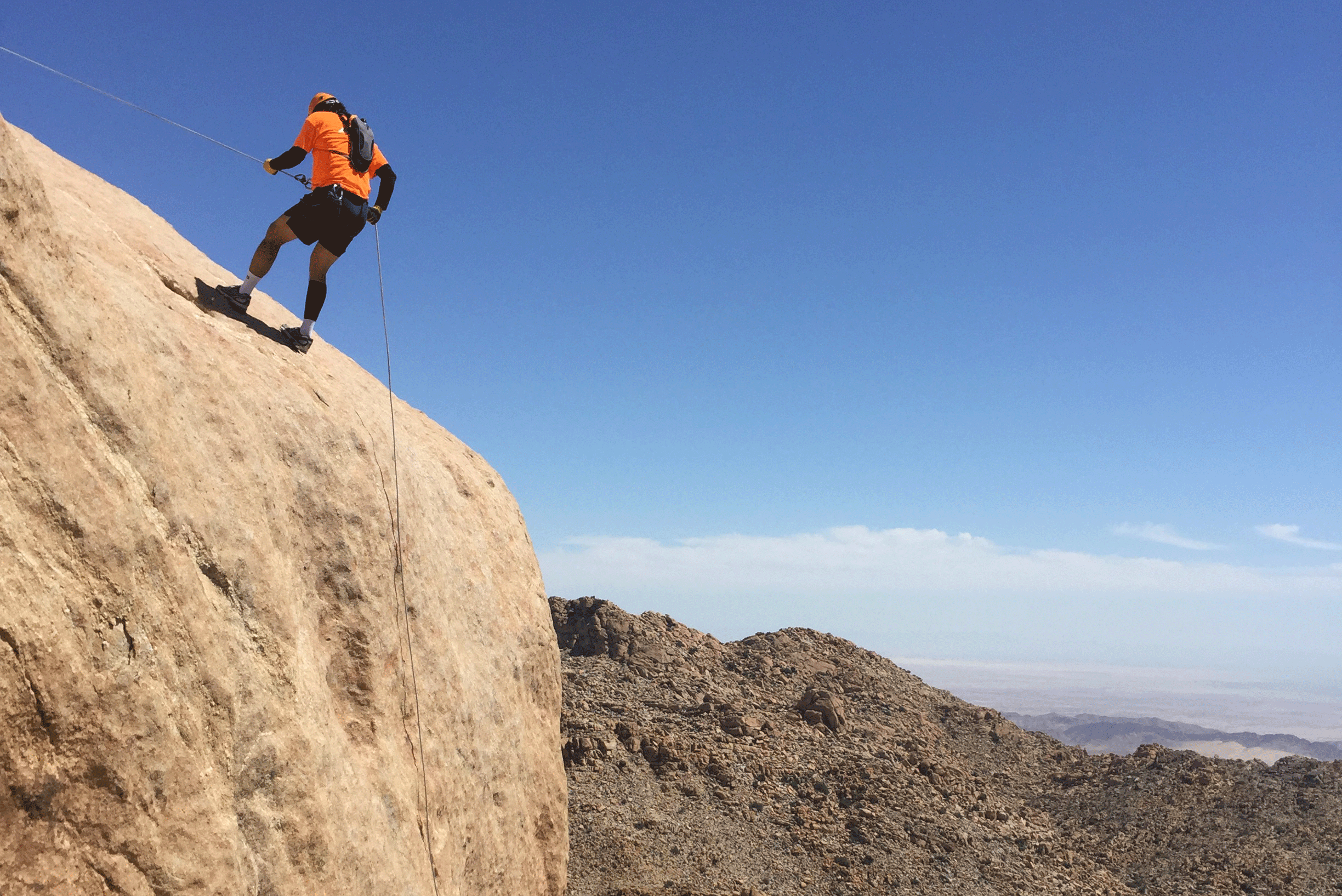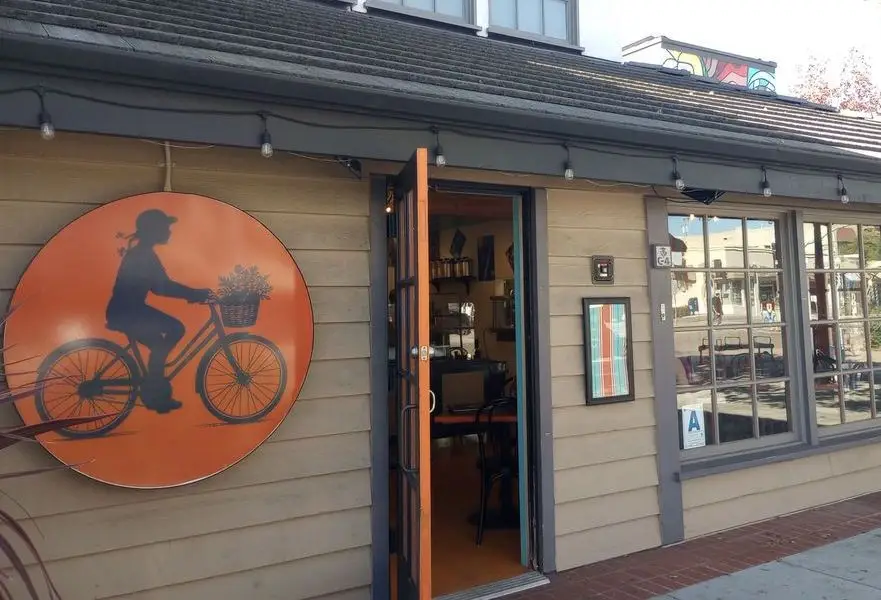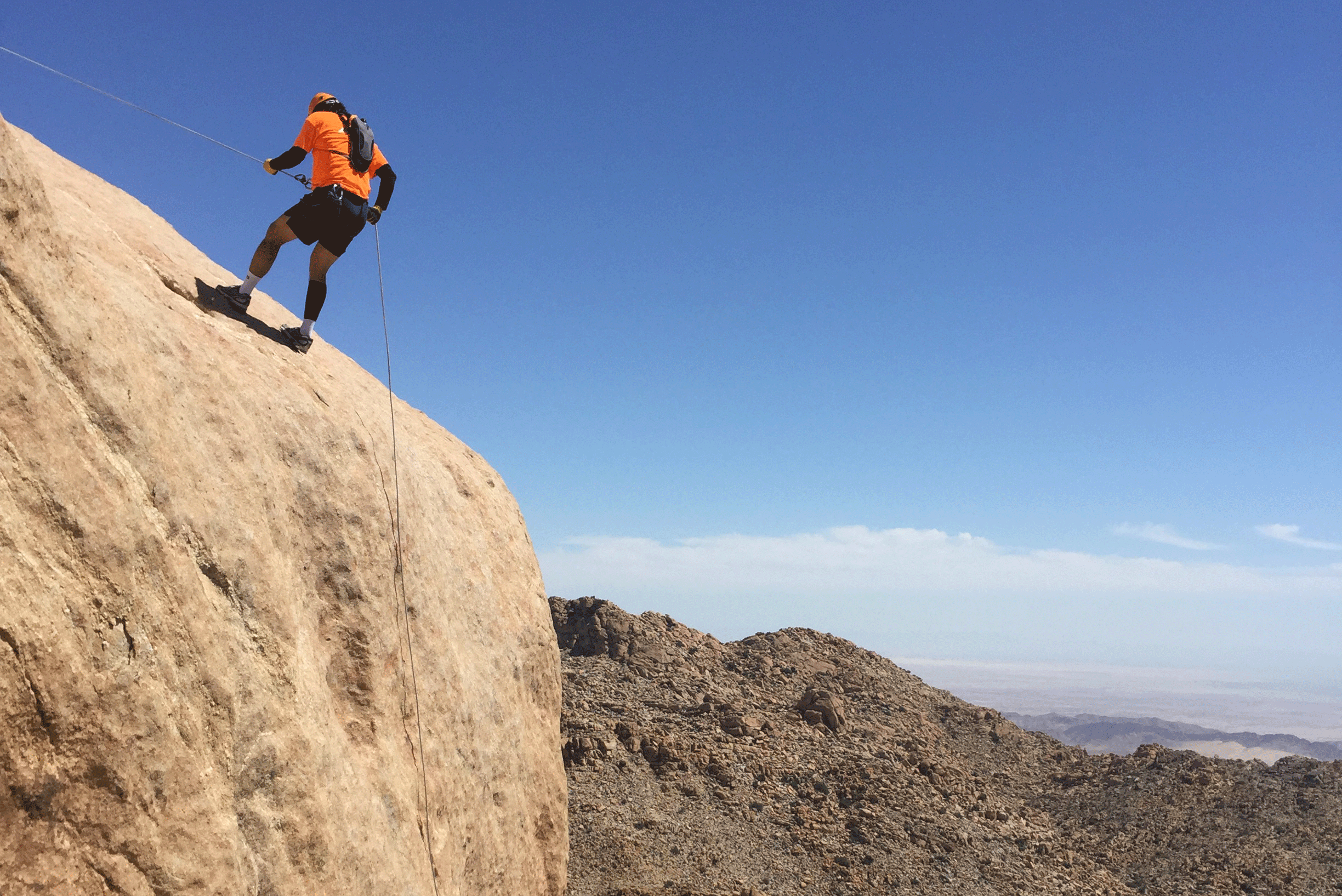For me, a trip to Baja usually means tacos and some surf. This time I found myself 4,000 above the desert floor, clipping my harness into a rope dropping out of sight, over a cliff’s edge. I was there among the jumbled granite boulders of La Rumorosa, a mountain pass between Tijuana and Mexicali—the perfect setting for an adventure race.
That’s why Mexican tourism officials created the Stone Human Race, Baja’s first-ever scrambling competition, held on May 19. “Scrambling” in this context has nothing to do with eggs or chorizo. It’s the kind that involves leaping, climbing, and otherwise navigating rugged terrain, like the kind found up there, an otherworldly landscape similar to the craggiest parts of Joshua Tree National Park.

I Tried It: Baja’s New Adventure Race
Photo: Chase Scheinbaum
The 2-kilometer course weaved up, down, and over the terrain, as well as through several cuevitas (little caves) formed by piled boulders. It also required six rappels, the first of which descended that very exposed cliff face, positioned over the serpentine highway below.
La Rumorosa get its name from a whispering sound the wind makes as it whips through. On race day, though, the air was still, the sun was strong. The only sounds were from clinking carabiners and the hoots and heavy breathing of 19 two-person teams competing for a first place prize of $500.
Just five miles from the U.S. border, La Rumorosa is home to a tiny mountain town that offers a cool summertime escape from the desert. The area is probably better known for its notorious stretch of highway, which has been fatal for many truck drivers (particularly before recent road improvements), or a nearby archeological site once inhabited by Kumeyaay people. The Baja California government is hoping to make it an adventure destination, too. Hence the inaugural event of what it plans to make an annual competition. Next year’s course will triple the distance to six kilometers.
I descended the cliff, butt-first, into an alcove. After unclipping from the rope, I continued following a trail of small, spray-painted eagles marking the course. At one point after rappelling into a cave, I had to find my way out by following the sunlight to an opening just big enough for a person. I was glad I’d opted out of the free burritos offered beforehand!
Each rappel station was monitored by an attendant who made sure competitors properly connected their figure-eight rappel device to the rope. A local search and rescue team was on site and there was even an ambulance at the entrance. The safety precautions were comforting. By day’s end, the only person who needed attention was a competitor who twisted an ankle. I could attest to at least one undiagnosed sun burn, a few minor scrapes, and a pair of sore quads.
The fastest team, a couple of experienced racers who traveled from Spain, crossed the finish line, sweaty and dusty, in about 45 minutes. Other than about $30 per person for the entry fee, and knowing how to rappel, racers need only a willingness to clamber around on jagged terrain. And to see Baja from a new perspective.

I Tried It: Baja’s New Adventure Race
PARTNER CONTENT
A racer rappells a cliff during the Stone Human Race. | Photo: Chase Scheinbaum

















